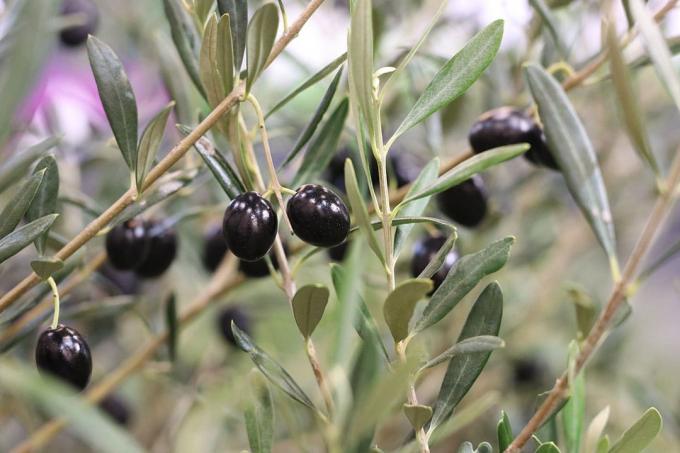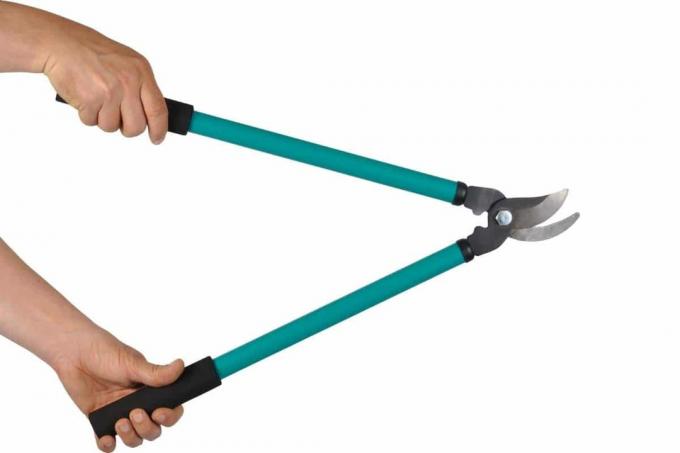
Table of Contents
- time
- Cutting measures
- Advantages of a regular cut
- Differences in ornamental and useful plants
- Cutting tool
- Care after the cut
- frequently asked Questions
The pruning of an olive tree should ideally be done in the spring before budding. What else to look out for when cutting the Mediterranean plant is summarized in the following article.
In a nutshell
- Main pruning in spring, further individual pruning measures also possible all year round until autumn
- Extent of cut back depends on age and state of health
- regular pruning is urgently required for health and aesthetic growth
- The right tool makes work easier and reduces the risk of illness
- additional care after the cut promotes regeneration
time
The ideal time to cut Olive trees (Olea europaea) is spring. It is important, however, to carry out the pruning measures before the first shoot in order to remove the new shoots and Buds not cut off.
In addition, selective prunings can also be carried out all year round until autumn. This is useful for kinked or diseased parts of the plant, but also for unsightly branches.
In order to keep the stress load for the plant as low as possible, the following weather conditions should be observed:
- no frost
- sunny to cloudy weather
- Temperature up to a maximum of 20 degrees Celsius

Cutting measures
the Olive tree is one of the species of the olive tree that is compatible with pruning and can therefore also tolerate radical pruning without major problems. Nevertheless, it is advisable not to cut the olive tree completely every year, but also to use the possibilities of selective conservation pruning.
| Upbringing | Conservation cut | Taper cut | |
| Goals) | Strengthen main branches Build a high-yielding crown |
Preserved olive tree | revitalize older specimens Prevent balding |
| Measures) | Correct the branches on the inside | Targeted shortening of diseased and damaged shoots |
Shorten the corresponding branches to a maximum of half their length each pruned branch must contain at least three buds |
| Causes of the cut | slow development of the branches, little leaf formation due to reduced incidence of light | dead branches can promote disease and pest infestation | Tree only grows at the ends of branches Creation of a completely bare area on the branches no formation of new shoots |

Tip: Since the rejuvenation pruning puts a lot of stress on the plant, it is advisable to do this with the Repot to combine. In addition to checking the root system, the tree can also be supplied with new nutrient-rich substrate that promotes the development of new shoots and buds.
Advantages of a regular cut
The main advantages of regularly pruning an olive tree are:
- Improving the exposure of the branches inside
- Increase in air circulation and ventilation
- Reduced risk of disease by removing the dead / diseased shoots
- Stimulation of the formation of new shoots
Differences in ornamental and useful plants
The main difference in the pruning of the olive tree is in the optics. While with an ornamental plant the main focus is on a shapely crown, with the useful plant it is necessary to have a high one Fruit yield to achieve. For this purpose, the treetop is thinned out much more and is usually limited to five individual strong branches. In practice, this shape of cut is also known as a plate crown.

Notice: Since the flowers and fruits only develop on annual twigs, annual pruning is necessary for an even yield.
Cutting tool
Depending on your age, one Olive tree and the thickness of the individual branches, different cutting tools are required when cutting. This should be cleaned or cleaned thoroughly before starting work. sterilized and sharpened. The cleaning prevents the penetration of pathogens into the wound area, so that the tree can close it quickly.
Tools commonly used in practice are:
- Secateurs: up to two centimeters in diameter
- Loppers: up to four centimeters in diameter
- Hand saw: over four centimeters in diameter
Notice: The use of a sharp tool makes it easier for the plant to close the wound, as the wound site is less frayed. The use of additional funds can then usually be dispensed with.

Care after the cut
Since cutting is associated with a high level of stress for the plant, it should be particularly cared for afterwards. Corresponding measures are:
- organic fertilizer like compost, guano or horn shavings
- Change of location to a shady place for around two weeks
- skip further pruning measures for at least two months
frequently asked Questions
Failure to cut back leads to the branches becoming bare over several years. This is expressed optically in the formation of a misshapen tree crown in connection with up to 50% bare main and side shoots.
In the case of a young and healthy olive tree, radical pruning is usually not necessary. Due to the slow overall growth of the plant, the resulting gaps often persist for several years. In addition, radical pruning means a lot of stress for the tree, so this should only be done with caution.
Plant parts that have once died cannot be revived even with targeted care measures. However, since these continue to influence the growth of the tree and also lead to reduced exposure and ventilation of the remaining branches, they should be removed quickly.
